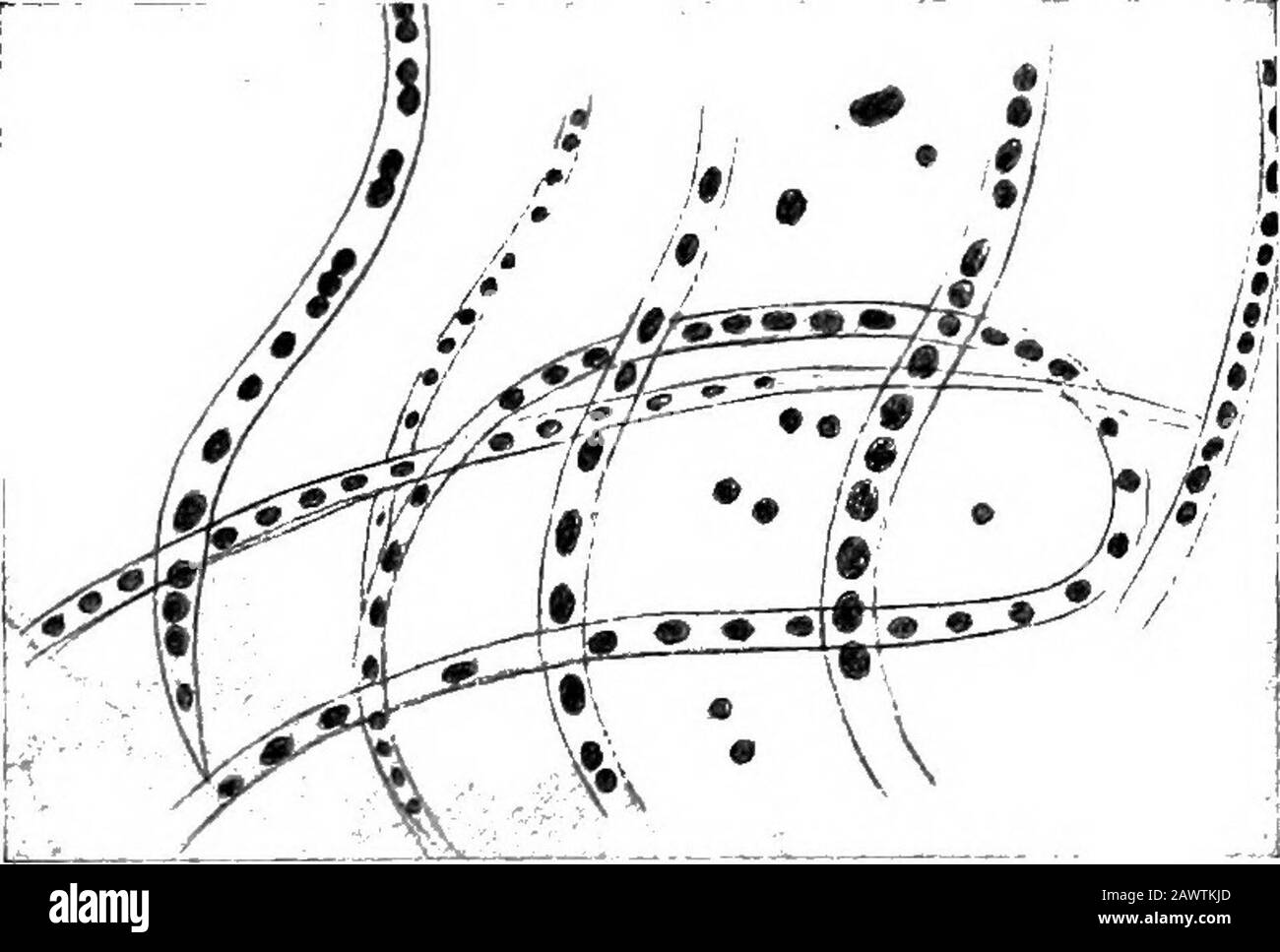Essentials of bacteriology; being a concise and systematic introduction to the study of bacteria and allied microörganisms . Fig. III.—Aspergillus fumigatus (X 500) (Frankel and Pfeiffer). Growth.—^Best upon fruit-juices. Non-pathogenic. Themold is green. Aspergillus flavus has the tufts and spores ofa yellow color. Aspergillus Fumigatus.—Is pathogenic for rabbits wheninjected into them. At the autopsy their visceraare foundfilled with the mold. Examination of Yeasts and Molds.—^Yeasts and moldsare best examined in the unstained condition. A small por-tion of the colony rubbed up with a mixtu

Image details
Contributor:
The Reading Room / Alamy Stock PhotoImage ID:
2AWTKJDFile size:
7.2 MB (211.1 KB Compressed download)Releases:
Model - no | Property - noDo I need a release?Dimensions:
1924 x 1299 px | 32.6 x 22 cm | 12.8 x 8.7 inches | 150dpiMore information:
This image is a public domain image, which means either that copyright has expired in the image or the copyright holder has waived their copyright. Alamy charges you a fee for access to the high resolution copy of the image.
This image could have imperfections as it’s either historical or reportage.
Essentials of bacteriology; being a concise and systematic introduction to the study of bacteria and allied microörganisms . Fig. III.—Aspergillus fumigatus (X 500) (Frankel and Pfeiffer). Growth.—^Best upon fruit-juices. Non-pathogenic. Themold is green. Aspergillus flavus has the tufts and spores ofa yellow color. Aspergillus Fumigatus.—Is pathogenic for rabbits wheninjected into them. At the autopsy their visceraare foundfilled with the mold. Examination of Yeasts and Molds.—^Yeasts and moldsare best examined in the unstained condition. A small por-tion of the colony rubbed up with a mixture of alcohol and a YEASTS AND MOLDS 227 few drops of liquor ammonia; of this, a little is brought uponthe glass slide, covered with a drop of glycerin, and the cover-glass pressed upon it. If the preparation is to be saved, thecover-glass is secured by ringing around the edges withvarnish or cement. Yeasts take methylene-blue stain verywell. Cladothrices and Streptothrices.—The streptothrix andcladothrix groups are classed with the higher bacteria, buttheir exact status is still imdetermined. They may be con-. Fig. 112.- -Cladotkrix dichomata from well-water (one-twelfth oil-im-mersion. Fuchsin stain) (authors specimen). sidered as representmg transition forms from the bacteria tothe lower fungi. Crenothrix Kiihniana (Rabenhorst).—Long filamentsjoined at one end; little rod-Hke bodies form in the filaments, and these break up into spores. Zooglea are also formed by means of spores, and these canbecome so thick as to plug up pipes and carriers of water.They are not injurious to health. Cladothrix Dichotoma (Cohn).—Very common in dirtywaters. The filaments branch out at acute angles, otherwiseresembling the crenothrix; accumulations of ocher-colored 228 ESSENTIALS OE BACTERIOLOGY slime, consisting of filaments of this organism, are foimd insprings and streams. (See Fig. 112.) Leptothrix Buccalis.—^In the mouth, long filaments orthreads resembling bacteria are com